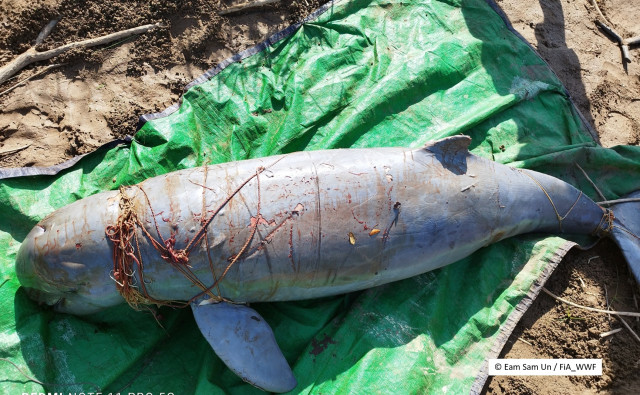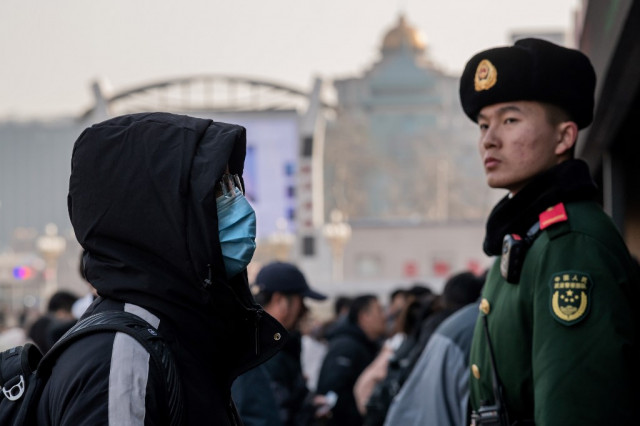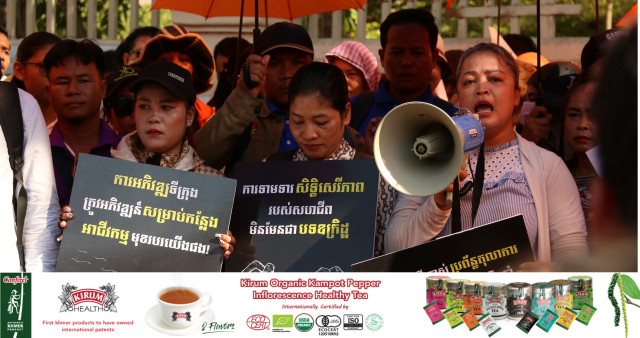Dolphin Deaths Spark Conservation Alarm

- By Teng Yalirozy
- December 26, 2022 3:04 PM
PHNOM PENH – Eleven critically endangered dolphins have been found dead in Cambodia’s section of the Mekong River in 2022.
Three deaths of the Mekong Irrawaddy species happened over seven days, prompting a renewed action to address the unprecedented death rate.
On Dec. 24, the body of a female that had been in good health was found floating near Koh Trung, about 10 kilometers downstream from Kampi Pool, in Kratie province.
An examination suggested that the dolphin perished after being entangled in a longline fishing hook, according to the conservation body WWF.
A longline fishing hook had been wrapped around the dolphin's body, fluke, and flipper.
The dolphin was 196 centimeters long, 7 to 10 years old and weighed about 93kg.
“This was the third healthy dolphin that died within just a seven-day period, indicating an increasingly alarming situation and the need for intensive law enforcement to be urgently conducted in the dolphin habitats,” said WWF.
On Dec. 18, an adult of the same species died from entanglement in a gillnet around Koh Dambang deep pool area, near the border between Kratie and Stung Treng provinces.
On Dec. 22, another adult female was found dead at Koh Trong commune, Kratie province, WWF reported.
As of Dec. 24, 11 dolphins have died in 2022, bringing the three-year total of deaths to 29. The fatality rates are high, making the likelihood that calves will live to adulthood low.
Seng Teak, WWF-Cambodia’s country director, said the increase in illegal finishing would bring about destruction to the dolphins in the Mekong River in Cambodia, calling for immediate action.
The loss of the three healthy breeding-age dolphins should serve as a clear signal to authorities to accelerate law enforcement in all vital dolphin habitats.
“There are no other options except to immediately implement strict law enforcement to crack down on all types of illegal activities in the areas where dolphins live,” Teak said.
He added that river guards and law enforcement officers need to accelerate their patrol day and night in the dolphin zones to restrain illegal fishing, while those who committed fishery crimes should deserve severe punishment as a warning to others.
Teak warned that dolphins are vulnerable to illegal finishing during the dry season from December to May, during which they retreat to the deep pools in the dolphin zone as the water levels plunge.
“Intensive, strict law enforcement is especially needed during this time,” he said. “If this crisis continues, the entire population will be lost in the near future.”
Mok Ponlok, director of the Kratie provincial Fisheries Administration, could not be reached for comments.
The Mekong Irrawaddy dolphin is listed as critically endangered on the red list of threatened species by the International Union for Conservation of Nature (IUCN). In Cambodia, Mekong River dolphins are found from the Anlong Kampi Irrawaddy dolphin conservation area to the Stung Treng province border upstream.
The latest dolphin general census, which was carried out in 2020, found that 89 dolphins were living in the Mekong River at that time. A new dolphin population tally will be done by October 2023 by the WWF and the government’s fisheries administration.
Currently, more than 70 percent of the Mekong dolphin population is older than 20 years old, making them incapable of breeding. Irrawaddy dolphins have a life expectancy of 27 to 30 years, WWF said.















